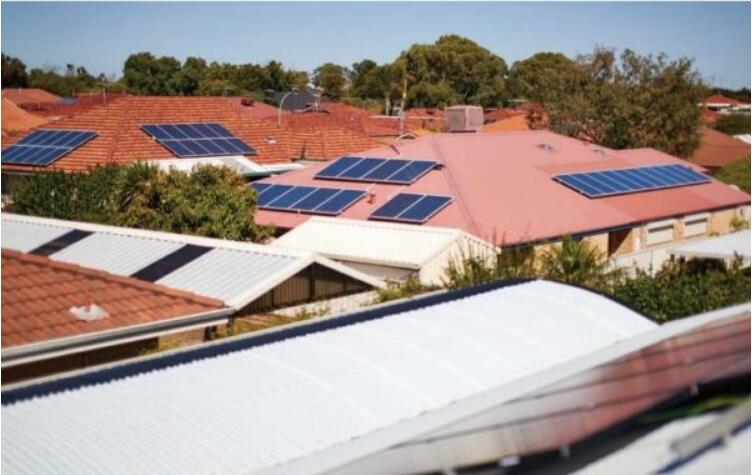New Emergency Solar Management rules have been introduced in Western Australia (WA), as the state grapples with the rapid transition of its power system from one dominated by large-scale, synchronous, thermal generation to one featuring increasing amounts of distributed energy resources (DER), including rooftop solar PV.
The WA energy sector has undergone unprecedented change in recent years with households embracing renewable energy technology at record rates with approximately 3,000 homes installing rooftop solar each month.
New figures released by the government show that in 2021, WA households added 191 MW of generation capacity to their rooftops, bringing the total amount of residential solar capacity in the state’s main grid to more than 1.35 GW.
That collective capacity means rooftop solar is the largest cumulative generator in the state, far outstripping the capacity of Synergy’s 854 MW coal-fired Muja Power Station.
More than 400,000 WA homes and businesses, about 36% of customers, now have rooftop solar connected to the South West Interconnected System (SWIS).
WA Energy Minister Bill Johnston said while the uptake of renewable technologies provides the opportunity for Western Australians to enjoy low cost and low emissions electricity, the intermittent and uncontrolled nature of these energy sources is presenting challenges to maintain the security, reliability and affordability of the power system.

Rooftop solar in WA has increased by more than 600% in the past decade.Image: WA Gov
“Over the past 10 years, rooftop solar has increased by over 600%, with 50% of Western Australian households expected to have solar panels by 2030,” he said.
“These rapid changes to the energy landscape have presented a range of challenges and opportunities, which we are addressing to ensure electricity remains affordable and reliable.”
Johnston said to enable the continued uptake of rooftop solar panels on homes and avoid blackouts, the government has introduced a range of policies, products and initiatives including the new Emergency Solar Management rules which come into effect on 14 February 2022.
The new rules will give network operators the capacity to remotely switch off residential solar systems as an emergency grid stability mechanism. The measures will apply to all new and upgraded solar PV and battery installations with an inverter capacity of 5kW or less.
The mechanism is to only be used as a “last resort” measure when demand for electricity reaches a critically low level and could affect the stability of the SWIS.
The state government said the changes will apply to those installing a new rooftop solar system 5 kW or less, and to those upgrading an existing rooftop solar system to 5 kW or under from 14 February 2022. They will also apply to those customers adding a battery, with the solar inverter remaining 5 kW or under.
A grace period has been provided for applications made prior to 14 February 2022 but installed by 14 March 2022.
 The new rules only apply to new or upgraded installs.Image: Worksafe
The new rules only apply to new or upgraded installs.Image: Worksafe
The new requirements will only apply to new and upgraded rooftop solar, meaning existing customers will not be affected.
The WA state government said it is also working on a long-term plan to reduce the need for curtailment, including investment in battery energy storage, improving pricing signals, and allowing for customer devices to provide energy services for payment.
WA is the second state to give network operators the capacity to remotely switch off residential solar systems as an emergency grid stability mechanism. A similar mechanism was first introduced in South Australia (SA) in 2020.
SA network operators utilized the mechanism for the first time in March 2021, remotely switching off more than 10,000 rooftop solar systems and almost 30 MW of large-scale solar PV when the state experienced “near-record minimum demand levels for electricity from the grid.”
Johnston said he expects other states will soon introduce regulations that provide transmission authorities with the ability to restrict solar PV output.
“Anywhere like Queensland that has high levels of rooftop solar will almost certainly follow down this pathway,” he said.
“It’s a sensible solution to a new problem. It allows more solar panels to be installed, and it allows that to benefit the whole community.”






